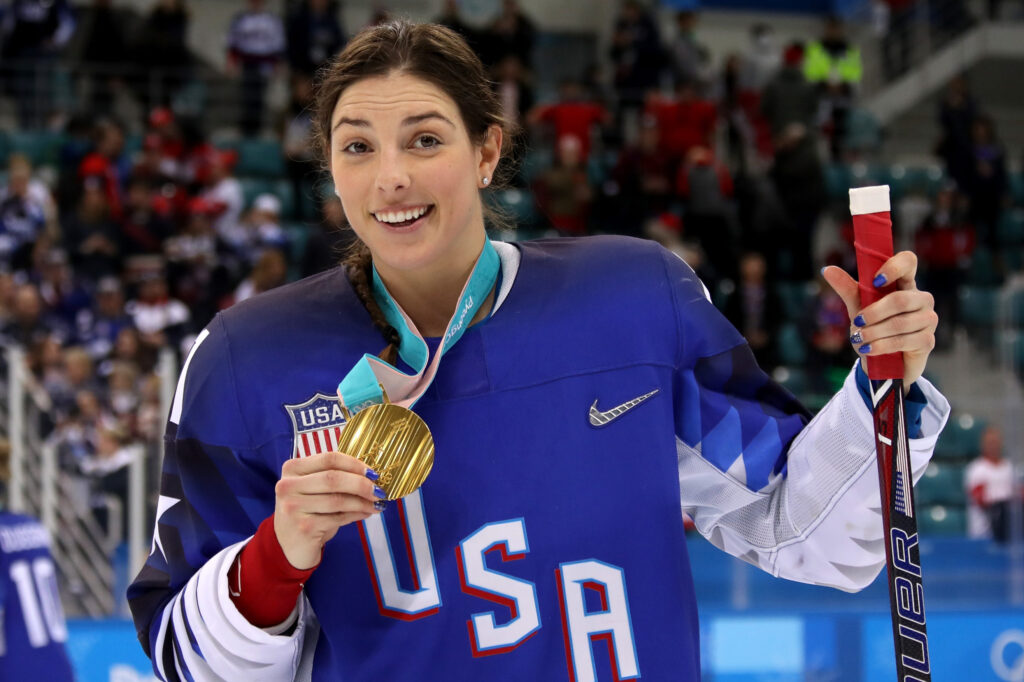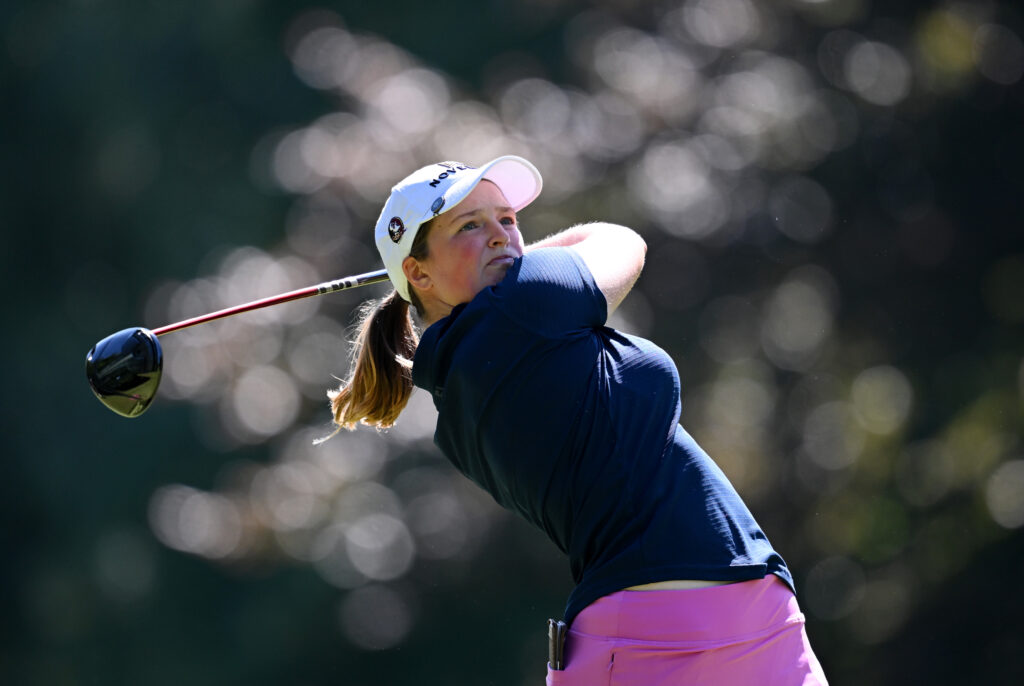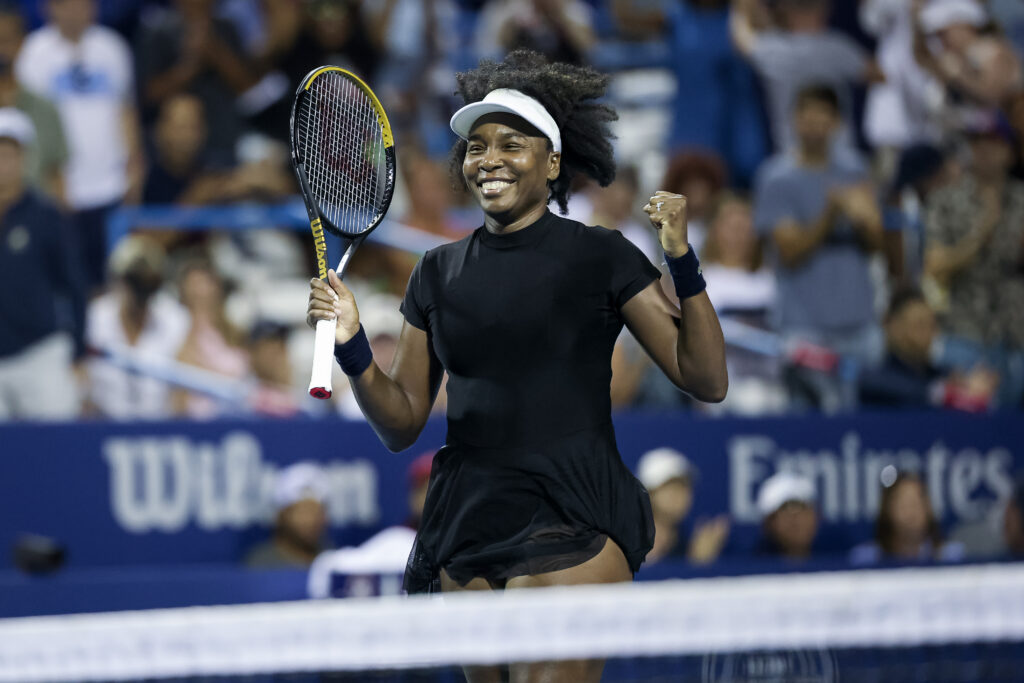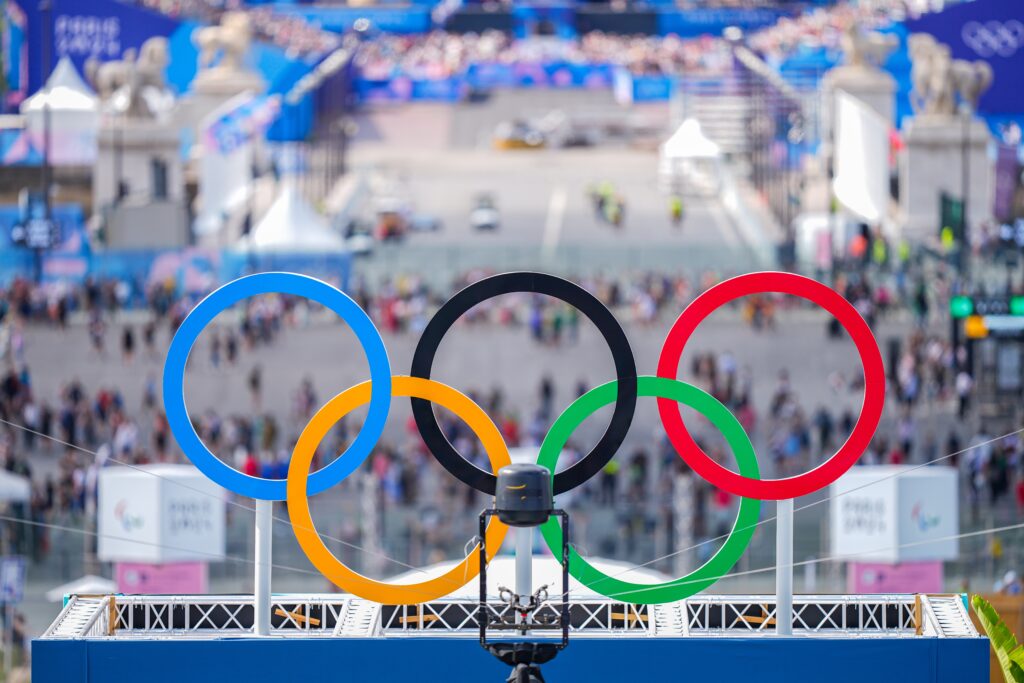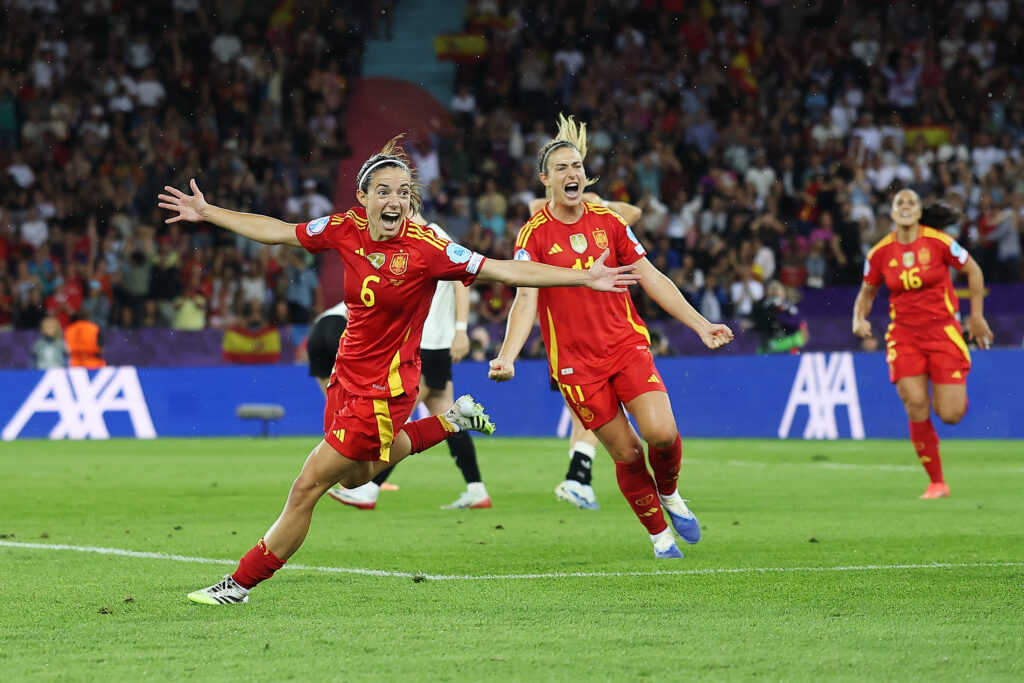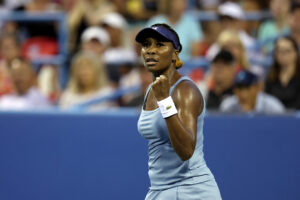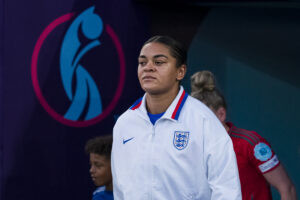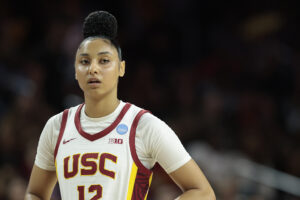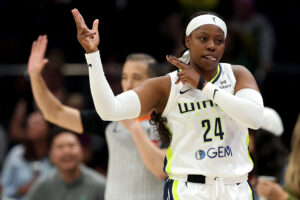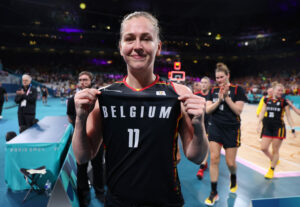Hilary Knight is one of the most decorated players in the history of women’s ice hockey. As a member of Team USA, Knight has won an Olympic gold medal, two Olympic silvers, and eight gold medals at the IIHF World Championships. In 2019, Knight was among a group of more than 200 of the world’s best players who announced they would not be suiting up for any professional league until better pay and working conditions were secured. Below, Knight goes into detail about her decision to walk away, what she hopes to achieve, the potential of women’s hockey, and much, much more.
Since its formation in 2015, there have been difficulties surrounding athlete pay and working conditions in the NWHL. How would you describe your experience dealing with these issues?
From the get-go, all of us athletes were extremely excited about the promise and the opportunity that the NWHL could provide for the future of women’s ice hockey. And we initially kept quiet about the conditions we were playing in and the pay. But as I played in the league over the years and saw the way things unfolded, whether it was our athletes not getting paid or not having the resources we needed, or a bus showing up three hours late, or a bus not having a bathroom when we’re traveling from Boston to Buffalo — these were all slaps in the face that kept adding up.
I understood that the league was building as we took off, but I think we were ultimately sold a dream that wasn’t ever going to become a reality. The NWHL was not ready to support us in the ways we needed and deserved. In the beginning I gave it time, and then I just realized that it was never going to grow into the league that could support its athletes. I wanted it to be a sustainable and competitive league that gives players adequate resources and funding that they can rely on. But I was seeing fellow athletes leasing apartments on the premise that they were going to get paid, but instead they had their payment cut in half and taken out from underneath them. That was really difficult to see and endure, especially when we are talking about moving in and out of expensive cities like Boston or New York — these were significant housing costs that players were not able to cover on their own without a supplemented salary or separate income.
What was the thought process behind choosing to not play in any North American league this year?
At a certain point, I just thought that the NWHL was never really going to get where it needed to be, and so I decided to move to Canada and play for the CWHL. I knew the CWHL wasn’t the answer either, but it provided a more competitive environment and potential stability. But months later, the CWHL ended up folding, which was a heartbreak in itself, but it allowed a handful of us to take a step back and ask ourselves: what are we doing here? We realized that we were continuing this self-perpetuation of women’s hockey, and that the sport is never going to get to where it needs to be unless it has the right leadership, the right business model, the right amount of resources and obviously the right players to push it forward.

How would you describe the purpose of what you’re doing with the PWHPA (Professional Women’s Hockey Player Players Association)?
This is for the future of the game. We’re trying to build something that’s bigger and better than what is currently out there. Not only for ourselves but also for the younger girls who dream of playing professional hockey. We think change is necessary, and that is ultimately why we’re not playing in any league in North America right now.
My teammates and I know that we have an opportunity to do something for the next generation. We’ve taken a step back and realized that we have two choices. We can conveniently go play for a league that is not going to give us everything that we want, which only fills the need for now. Or we can put our feet down and really fight for the right to play in a situation that’s both built for us to succeed now and also provides a suitable structure for the next generation of players.
Do you think that women’s hockey has the fanbase to support a large professional league? How would an investor know that the potential returns are there?
I think women’s hockey does have a strong fan base, but I think ice hockey in general is a little bit further behind other sports in terms of fans. It’s a little more insulated, so we have some ground to make up in terms of making the sport more accessible and inclusive. I think this will be a pivotal factor in taking hockey to the next level, as more participation will lead to more fans.
In terms of women’s hockey specifically, for so many years, I thought the product was the issue. I thought being a woman on ice was the issue. And that couldn’t be further than the truth. Our skill sets, the game, the level of competition, the physicality, the speed — all of it is a perfect mixture for delivering a high quality product. Now, on the other hand, I do think we have a visibility issue, and that’s an issue across all female sports. Whether that’s in the workplace, on the field, on the ice, or on the court. We’ve never been given the space to develop our sport. The men have had so many years, if not centuries, to plant seeds to develop their sport, and the women just haven’t been able to do that. We’ve never been given the opportunity nor had the amount of time to really grow the same way. So that’s why I say it’s not a product issue, it’s a visibility issue. And if we can continue to deliver on the visibility, fans will show up. Fans will turn on the TV.
Do you have games you can point to that show what visibility and publicity can do for the sport?
So I went to the University of Wisconsin, and our team had one of the highest attendance averages for an NCAA team at the time. We had a game that had 15,000 plus fans. This was at the collegiate level, which is insane. And people said no one watched women’s hockey or women’s college hockey. But the reality is if we’re not on TV, if we’re not being streamed, if people don’t know we are playing, they’re not going to show up. People in Wisconsin knew we were playing, so they showed up. And that’s why we continued to develop a fan base there. The same notion goes for the professional level. If no one knows we’re playing in Minnesota, no one is going to show up to our game in Minnesota.
I think back to when the NHL Anaheim Ducks hosted the USA Hockey team for the last stop of our rivalry series with Canada. That game set an attendance record in the US. They ended up having to open up more seating to accommodate fans. And part of the reason fans showed up is because the Duck’s marketing department advertised our game. People knew ahead of time that the game was happening and sure enough, a ton of fans came to cheer us on. There are skeptics that think that no one will show up to women’s games, but it’s just not true. We’ve proven the interest is there.

Let’s talk more specifically about your individual position. You’re the de-facto face of women’s hockey right now. How are you embracing that role and the pressure that comes with it?
There’s definitely pressure, and I think most of it comes from not wanting to have a misstep or ever misguide people. I want to be great on the ice and I want to be great off the ice. But I’ve also learned that you can’t do everything at once, so off the ice I really try to pick what’s most important and then focus on that when I’m not training. Whether it’s through my on-ice performances, or just being a great citizen in my community, I want to be a great role model for people who are looking for inspiration. I mean, it’s just so cool to be able to have a positive impact on other people’s lives and to be able to do it through something I love. It is a huge honor and a huge responsibility, but it’s a position where I feel like I can absolutely thrive.
A question about your brand. You often present like a traditional tomboy — you wear the backwards hats and the beanies. But I’ve seen media images of you where they really doll you up. Neither is better or worse, but do you feel like the media portrays you in a way that is significantly different than how you really are?
Well, I have definitely changed a bit over the last five or 10 years. I used to be so concerned with how I dressed, how I looked, how people viewed me. I was so consumed with wanting to be forward-facing and presenting the sport in a way that got more people attracted to it. I was so cautious about my image, and I was self-conscious about a certain understanding of what femininity was. But as I’ve gotten older, I’ve realized that I need to present a realistic version of myself. And that’s specifically what my Instagram and YouTube channels are about.
I also partnered with Red Bull, which was a huge honor. And because only Red Bull athletes get to wear the Red Bull hat, I got totally hooked on wearing that everyday, to the point that I really hope I’m not balding now. But overall, I do think social norms have continued to develop and advance in different ways, mostly for the better. Femininity used to be a very narrow category where now it’s so much more broader than what even I thought. And now I want to take more advantage of that to share with people what I’m really like as a person off the ice.
Back to business. The NHL itself is a very profitable enterprise. Do you think women’s hockey, with the right investments, could reach that kind of level?
Most definitely. I wouldn’t put a ceiling on growth in any sport. I think if you have the funding and the resources from the get-go on the women’s side, it has the potential to mirror the men’s side. It’s only natural when you get involved in a business that it continues to grow if you give it the right type of nourishment, so to speak.
I’d say our situation is something similar to an entrepreneur who has a fresh business model and is looking for seed money. That’s what we’re trying to do. We’re asking people to buy in and believe in our vision, and help us get to where we know we can be. We have that entrepreneur mindset of wanting to build and grow, while also understanding that we’re a handful of players trying to do it as best as we can. We aren’t a league. We’re an association that’s going to put on tours and help our members while always keeping in mind that we’re working for the next generation.
Why don’t you think the investment has been there on the women’s side?
There’s a handful of reasons, starting with the negative stereotypes surrounding women in sports. It’s a global issue, and you see it in other industries. Women are not receiving equal pay for doing the same amount of work as men. They don’t have the same equity despite putting in the same amount of sweat. And this has been happening for years, so it is hard to break out of that mold. But what is promising is that the world is changing, and this couldn’t be a more exciting time to be a woman in the world. We are getting more opportunities now than ever before, both in and outside of sports, and that makes me really excited for the future. And this is great for both the athletes getting these opportunities, and for the men and women who have been missing out on these incredible performances.
But that’s why I say it’s a visibility issue, rather than a product issue. If we can continue to improve our visibility, fans will show up, they’ll turn on their TVs, because the product is there. And I’m quite confident with that. If you look at where women’s ice hockey is on growth charts and how it’s developing in North America, even if you just look at the youth level, it’s pretty outstanding. We’re moving in the right direction. And we’re all very excited about where the sport can go. But we also understand that we’re maybe 20, 30 years behind soccer. And if you look at where soccer was 20 years ago, the 99ers [the 1999 World Cup winning USWNT] did so much for the generations that followed. That’s a team we’re trying to emulate in a sense, even though they’re in a different sport.

The 99ers are an interesting comparison, because they’re iconic now but they also had to play through a lot of BS during their time. Your approach is obviously different from theirs. How did they inspire you?
I look back to our experience with our equitable support battle with USA hockey [the U.S. women’s national team and USA Hockey agreed to a landmark new contract in 2017 after the players threatened to boycott the IIHF World Championships]. I think you’re always building on the people who came before you, and as role models they provided a lot of insight into how to go through those big, public battles. They did what they could do at the time to push the sport forward, whether that was going door to door to sell tickets to their own events or educating people about women’s soccer. Times are different now, though. We can communicate with the world in a lot of different ways. And obviously, the US women’s soccer team is on different footing now than they were 20 years ago. We still look to them, though, because what they’re doing is awesome. They continue to pick up the torch and sprint forward with it.
How do you respond to critics who say you opted out without a clear set of plans?
It would be silly to assume that we don’t have a plan, even just given the caliber of supporters that we have, whether that’s Billie Jean King, Secret, Budweiser, Bauer hockey or even Ballard Spahr, our law firm, as well as the hockey talent that we have. Some people have suggested that we opted out without a plan, but that’s definitely not the case. Part of our plan was the Dream Gap Tour, which we’re really looking forward to building off of given how much success we had last year. We have a lot of great people involved, and when you put them all in a room, they’re going to make great things happen.
And what people forget in this back-and-forth dialogue in women’s hockey is that there are about 200 women essentially sacrificing the primes of their careers to not play because they want to find something that promises a better and more financially sustainable future than what the sport is currently offering. When you put it that way, our actions are easy to understand. Granted, not everyone will agree with our vision or views, but if you look historically at women’s sports, we haven’t had the same funding as male sports. And when you look at what has allowed male sports leagues to develop and be sustainable long term, it’s the fact that they have organizations that are providing their athletes with the necessary resources. That’s what we’re after.
Is there a risk that you’ve potentially slowed that progress by creating this rift between the players and the NWHL?
I think the biggest potential fallout is forcing the fans to choose. That’s a media narrative that’s continuing to be pushed, that it’s us versus them. And that was especially present when we still had the CWHL, and there were two dueling leagues, one in Canada and one in the US. But I don’t think that necessarily hurts or slows the growth. I think there’s just a difference of opinion as to how to move the game forward. I always want to be honest about what I believe is right for the sport, and how people receive it is entirely up to them. I am not on a personal mission to exploit or “destroy” a league, but I will be critical of something that makes lofty claims and doesn’t measure up.
But ultimately, I’d say the future of women’s hockey is extremely bright, and we’re looking forward to taking the sport to the next level. We might not necessarily have a league to play in right now, but we’re helping that young girl who is watching us fight make her dream of becoming a professional hockey player possible. And that’s what everyone wants.
